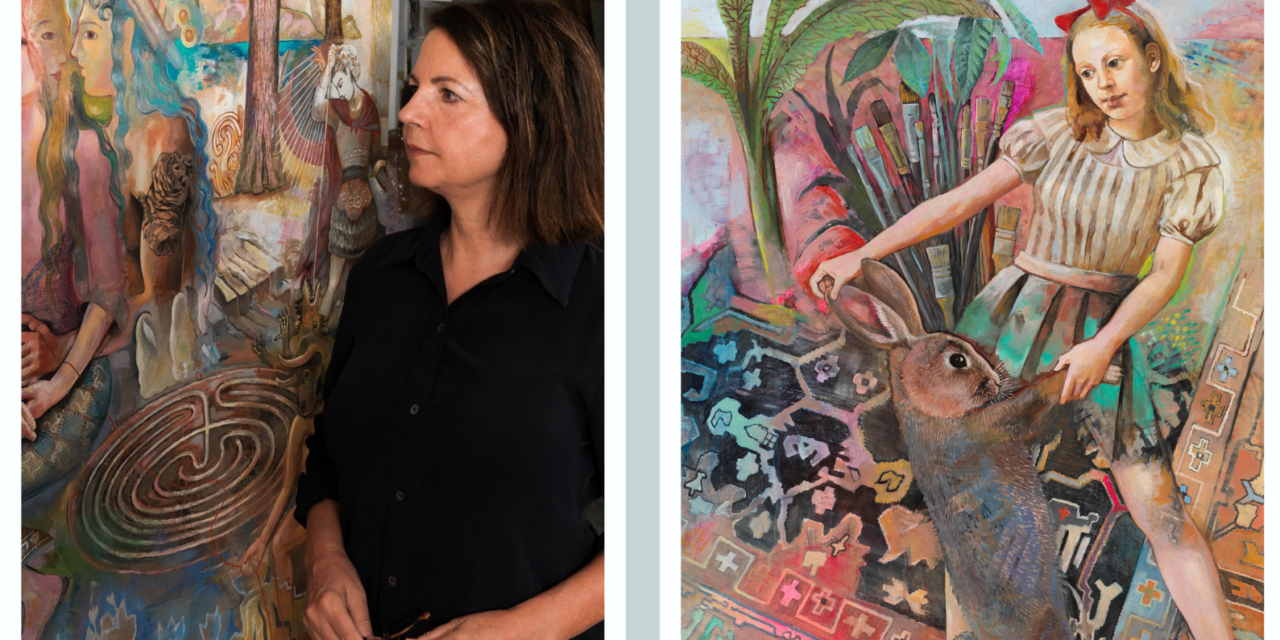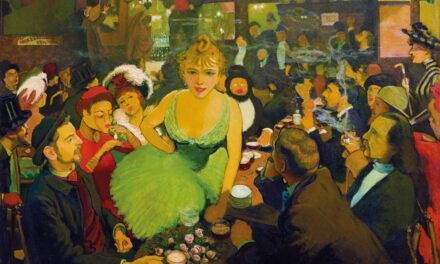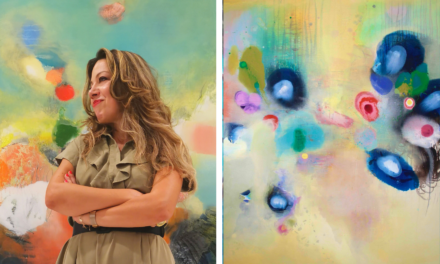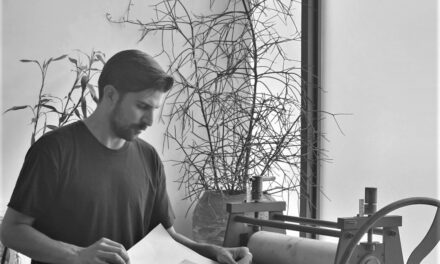Katia Varvaki presents her solo exhibition Time blows in dreams at Astrolavos Art Gallery. Her vivid brushstrokes create narratives incorporating symbolic elements, different eras and cultures, while inviting viewers to a serene atmosphere. Her works reflect mindful choices that embrace harmony, contemplation, and universality and offer a sanctuary where we can engage with the ineffable aspects of our experiences.
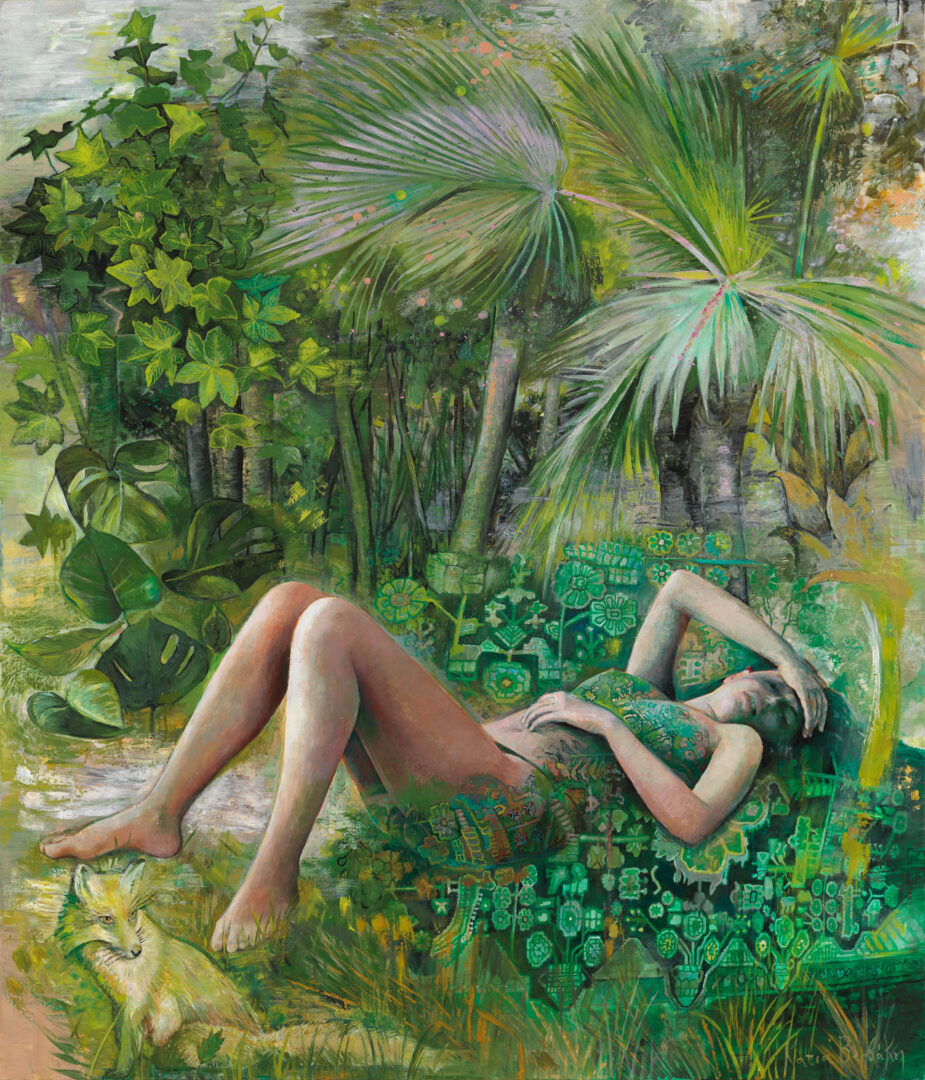
For more than three decades, Katia Varvaki has been serving figurative painting creating her personal style. Her art focuses on dreamlike, poetic realism and combines fairy tales of our childhood and contemporary issues. She draws inspiration from great artists (Da Vinci), mythology (Ariadne, Jason) and also literature (Don Quixote). Children, nymphs, fairies and young girls are depicted in idyllic landscapes. Her subject matters extend far beyond reality and acquire a metaphysical quality as she deals with issues of innocence, age, femininity and desire.
She studied Painting at the Athens School of Fine Arts, Greece, under Professors Patraskidis and Mytaras. She has presented over 16 solo exhibitions in Greece and Cyprus and has participated in more than 40 group exhibitions in Greece, London, Brussels and Cairo.
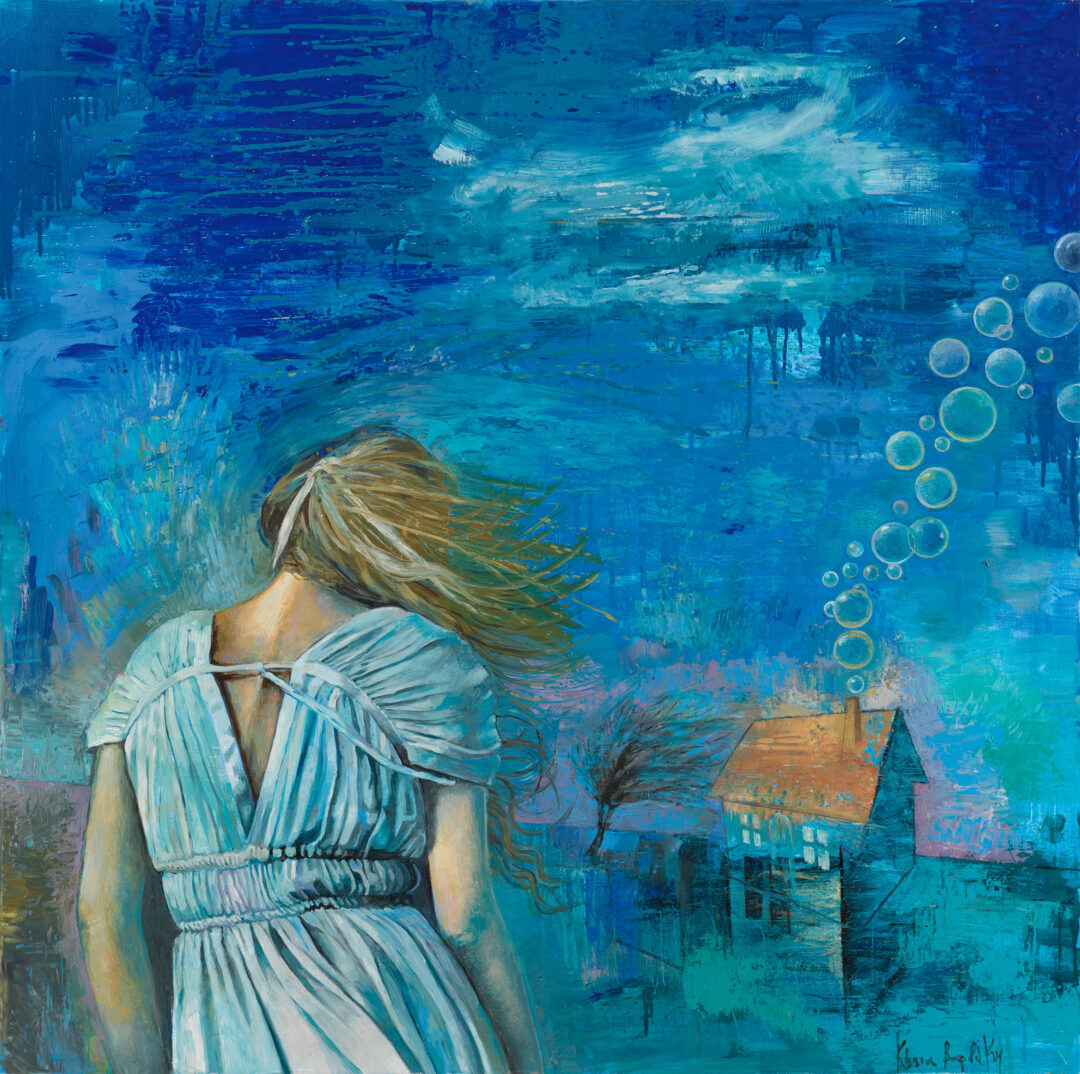
Katia Varvaki shares her artistic views with Greek News Agenda*.
To what extent are personal experience, observation, subconscious and existential concerns reflected in your work?
All these make up the world of a creator. As time goes by, our senses become more acute while intuition and subconscious become an inevitable condition. We begin to observe the deeper meaning of things and we tend to pay attention to what lies beneath the surface. Our reflections have multiple aspects.
Your artworks have a realistic and a metaphysical dimension. There are also some recurring elements. I noticed, for example, the amazing carpets depicted in your works…
The visible and the invisible become one in my works. Carpets are a symbol of beauty, warmth, and aesthetic need. Birds are a symbol of freedom. Clocks and nature coexist with children, lakes, gardens, young women. Motherhood, love, sexuality and the inevitable departure… Themes from history and literature provide an occasion to reflect on the concepts of time, faith, love, doubt, loss and disappointments.
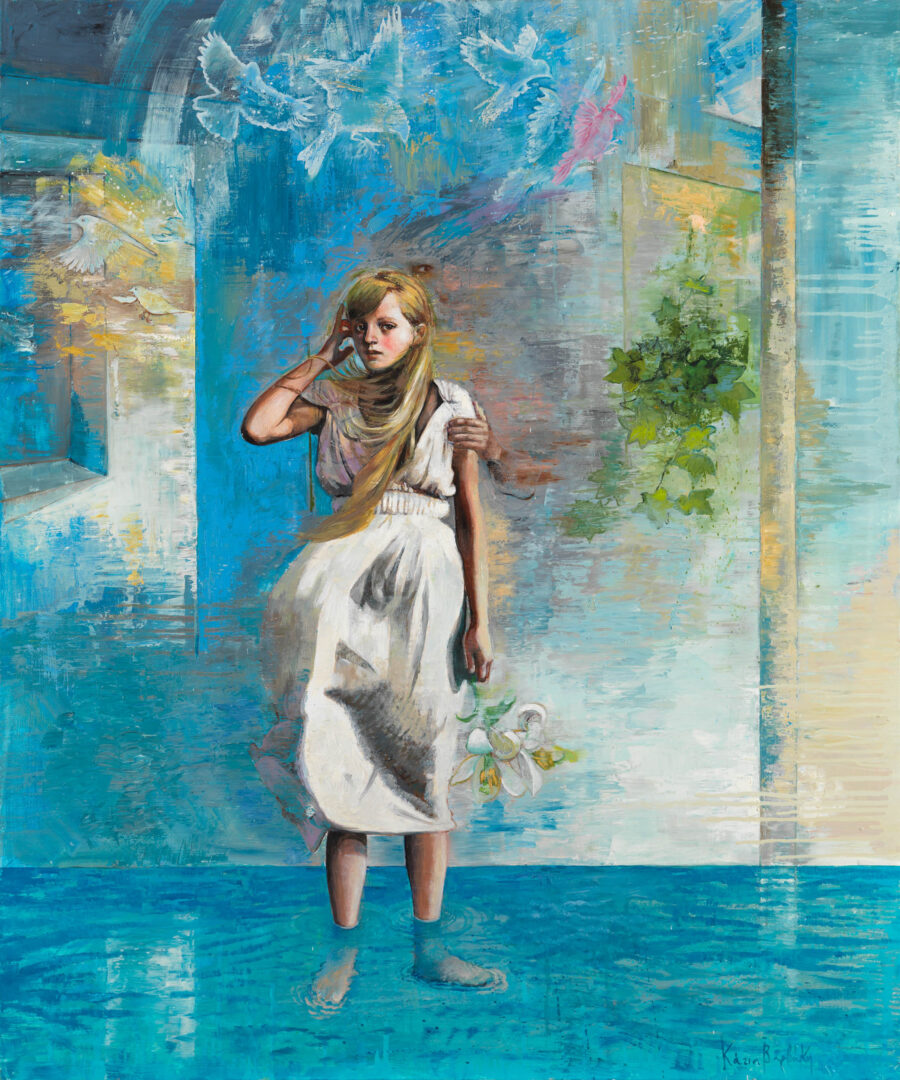
The landscapes depicted in your paintings are at first sight idyllic, serene. On closer look, though, we observe a subversive, fluid, and even threatening universe. What are the insecurities you seek to capture?
We live in a chaotic, fluid universe. Everything around us is upside down. Nature is no longer a comforting condition. Values such as honesty, sincerity, meritocracy, and selfless love are considered obsolete. We are used to living in this landscape. Children are our hope.
Femininity is at the core of your work. Your paintings explore the female body, motherhood, and female sexuality. What are the challenges that modern women have to deal with?
Woman dominates my work. In several paintings, she becomes one with nature. She is a source of life and wisdom. A creature full of beauty, eroticism, innocence, and knowledge. Unfortunately, we live in a country where women are struggling much harder than men to fulfill their multiple roles. Let alone a woman artist. Many promising artists never live up to their full potential.
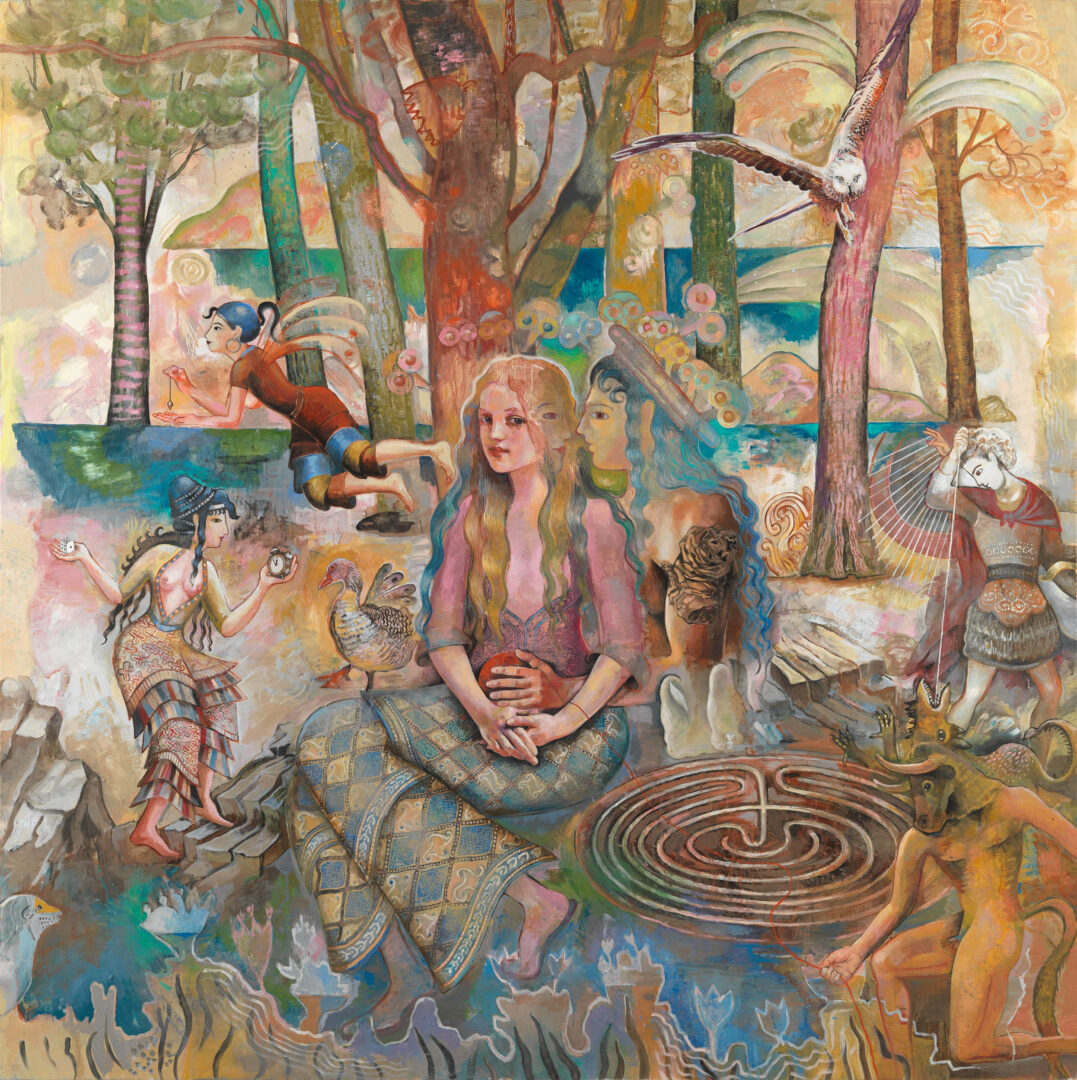
How do you approach the concept of time in a woman’s life? Do you think that growing older leads to wisdom, liberation and self-knowledge or does it bring decay and the loss of innocence?
What time deprives us of in the body, it makes up for in the mind, in the heart, in wisdom, in knowledge of the self. The sense of freedom is much greater. Innocence is not lost if you cultivate it, just like curiosity and enthusiasm. These elements characterize those engaged in art. If you are cynical, skeptical, and bitter you will always be like that. It has nothing to do with age.
What challenges do contemporary female artists face in Greece today? What does it take to gain recognition? Do the same standards apply to their male colleagues?
The situation is quite challenging. Apart from talent, it takes patience and perseverance, a lot of hard work, goal-orientation and strong will. If you get frustrated easily, if you get tired easily then you are not cut out for it. Public relations, financial situation, luck and circumstances also count. It also depends on whether your work appears at the right historical and political moment. Acceptance, especially by collectors, is much easier for men. Women, on the other hand, are not trusted. Young women are especially not trusted as it is believed they will give up on the way due to motherhood. That’s why collectors will not invest in them. For the same reasons, galleries would also prefer to work with men.
*Interview by Dora Trogadi
Intro photos: Left: The artist Right: Alice
TAGS: ARTS

